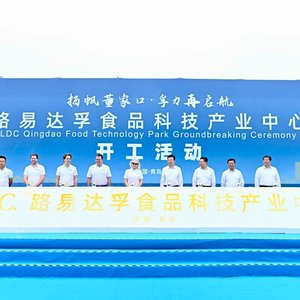The U.S. Soybean Export Council (USSEC) announced today feed trial research results that attain a major goal for sustainable marine fish aquaculture: producing farmed marine fish with a wild fish in/farmed fish out (FIFO) ratio of less than 1:1.
The amount of fishmeal and fish oil from wild-caught sources used in farmed fish feed has been a concern for the long-term sustainability and scalability of aquaculture. Marine species, such as salmon, tuna, and yellowtail are higher up the food chain, and require diets comprised mostly of proteins and oils. These are usually in the form of fishmeal and fish oil derived from smaller fish lower on the food chain, such as anchovies and menhaden.
However, these wild fisheries cannot be scaled up to meet the feed demands of a growing global aquaculture industry. Much innovative research has taken place in the past decade to find alternative sources of proteins and oils in an effort to increase the sustainability of aquaculture and reduce pressure on wild forage fisheries.
Over the past five years, U.S. soybean farmers have sponsored a series of feed trials for farmed marine fish to test the use of soy ingredients as a replacement for fishmeal and fish oil. Recent trials conducted by Kampachi Farms in Hawaii, collaborating with the University of Nebraska, have produced farmed carnivorous fish with a FIFO ratio of 0.89:1.
“We’re very excited with this research and the promise it holds for the future of aquaculture,” said Michael Cremer, USSEC’s Technical Director for Global Aquaculture. “Soybeans are particularly rich in nutrients that produce healthy and safe farmed fish, and unlike wild resources, can scale up to help aquaculture meet increased demand for seafood.”
An eight-month feed trial in 2011 tested an experimental diet of 40% soy protein concentrate (SPC) and a 50:50 blend of fish oil and high Omega-3 soy oil against a standard commercial feed traditionally used to raise kampachi (a sashimi-grade Hawaiian yellowtail). With taurine (a non-essential amino acid) added to the SPC diet, the kampachi showed improved growth rates. Furthermore, in controlled taste tests, consumers could not detect any difference from fish raised on a conventional diet.
“Attaining a FIFO of under 1:1 has been the holy grail of marine fish feed research for some time,” said Neil Anthony Sims, President of Kampachi Farms. “We show here that we can produce premium, sashimi-grade fish with a net increase in marine proteins: that is, we produce more fish than our fish eat. This represents a significant step forward for the economics and the ecological efficiencies of marine fish culture. This research is truly the marriage of America’s heartland with her blue horizons.”
This year, Kampachi Farms will run trials to test refined diets with the SPC and soy oil, as well as incorporating a strain of microalgae into these experimental feeds as a natural source of taurine and EPA/DHA (the heart-healthy Omega-3 fatty acids found in fish oil). Future research will also include a market analysis of the cost effectiveness of these diets.
For more information, visit www.soyaqua.org.










